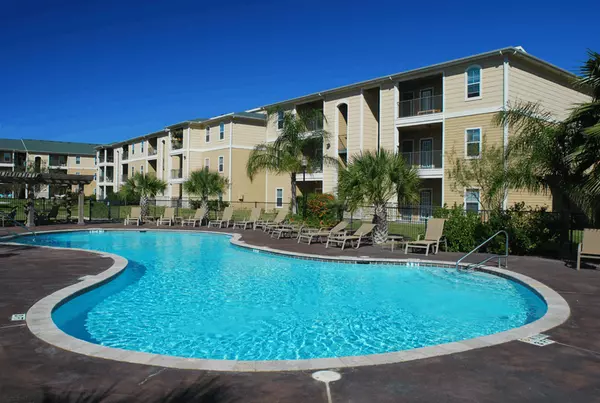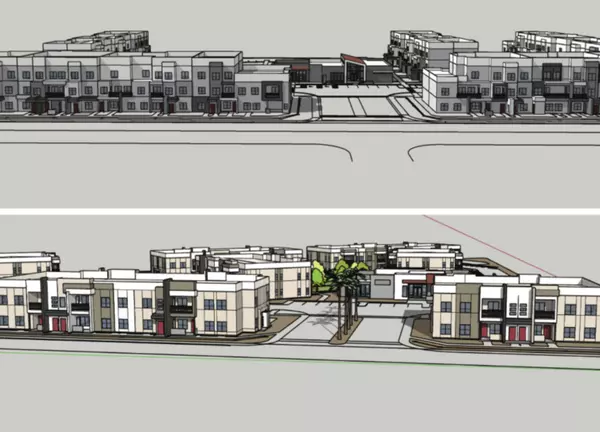Why Las Vegas Stands Out for Multifamily Investors in 2025

Why Las Vegas Stands Out for Multifamily Investors in 2025

As we move into 2025, investors are strategically assessing where to allocate capital in an evolving multifamily housing market. While many Sunbelt cities face challenges like oversupply and rent stagnation, Las Vegas continues to shine as a resilient and lucrative market for multifamily investments.
With a balanced supply-demand ratio, steady job growth, and business-friendly policies, Las Vegas multifamily properties offer superior risk-adjusted returns compared to other major Sunbelt and West Coast metros.
Las Vegas vs. Other Sunbelt Markets
The Sunbelt region has witnessed a surge in new apartment construction, leading to rent declines in some major cities. However, Las Vegas has remained resilient, making it an attractive choice for real estate investors.
1. Rent Growth Resilience
📉 Rent Declines in Key Sunbelt Cities (YoY, 2024-2025):
•Austin: -5.9%
•Phoenix: -2.9%
•Raleigh: -3.1%
•Las Vegas: -0.8% ✅ (Minimal decline, showcasing market strength)
2. Key Advantages of Las Vegas Over Other Sunbelt Cities
✔ Balanced Supply & Demand
•Unlike Austin and Phoenix, which are oversupplied with new apartments, Las Vegas maintains a sustainable absorption rate—helping prevent steep rent declines.
✔ Tourism-Driven Economic Stability
•While tech-driven cities like Austin and Raleigh experience fluctuations due to tech layoffs, Las Vegas benefits from its booming tourism and hospitality industry, ensuring consistent rental demand.
✔ Affordability & Cost of Living
•Compared to Phoenix, Dallas, and Atlanta, Las Vegas offers lower rents and reduced operating costs for landlords—making it a prime choice for cash-flow investors.
💡 Investor Tip: Las Vegas offers strong rental demand without the oversupply risks seen in many other Sunbelt metros.
Las Vegas vs. West Coast Cities
For multifamily investors considering California, Seattle, or Portland, Las Vegas presents a superior alternative with higher rental returns, pro-business policies, and significant population growth.
1. Key Advantages Over West Coast Markets
✔ Lower Taxes & Fewer Regulations
•Nevada has no state income tax, lower property taxes, and minimal rent control laws compared to Los Angeles, San Francisco, and Seattle.
✔ Higher Rent Growth Potential
•Many West Coast cities struggle with rent stagnation due to affordability issues and strict regulations, while Las Vegas rents are projected to rise due to strong population growth and job creation.
✔ Business & Population Growth
•Companies relocating from California to Nevada are driving job creation, which fuels rental demand—making Las Vegas a long-term winner for multifamily investment.
💡 Investor Insight: Las Vegas offers high yield potential without the tax burdens and overregulation seen in California and Washington.
Forecast: Why 2025 Looks Promising for Las Vegas Multifamily Investors
Despite headwinds in the national multifamily sector, Las Vegas is well-positioned for sustained growth in 2025.
Key Investment Drivers for 2025
✅ Projected 2.3% Job Growth
•Higher than many Sunbelt markets, ensuring consistent rental demand.
✅ Limited Future Supply Pressure
•Unlike Austin and Phoenix, which face oversaturation issues, Las Vegas maintains controlled apartment development.
✅ Rent Growth Potential
•Forecasted 1.0% rent increase in 2025, while many Sunbelt metros anticipate further declines.
💡 Why It Matters: With strong demand, controlled supply, and favorable economic conditions, Las Vegas presents one of the best investment opportunities for multifamily investors in 2025.
Maximize Your Returns with Las Vegas Multifamily Investments
For investors seeking high-yield, low-risk multifamily properties, Las Vegas remains one of the top choices in 2025.
📩 Looking for expert guidance? Contact Hyde Real Estate Group to explore exclusive investment opportunities in Las Vegas today!
Frequently Asked Questions (FAQs)
1. Why is Las Vegas a good market for multifamily investing in 2025?
Las Vegas offers strong job growth, low supply risk, and stable rental demand, making it an attractive market for multifamily investors.
2. How does Las Vegas compare to other Sunbelt cities?
Unlike Austin, Phoenix, and Raleigh, which face rent declines due to oversupply, Las Vegas maintains rental stability with a more balanced supply-demand ratio.
3. Are taxes lower in Las Vegas compared to California?
Yes. Nevada has no state income tax, lower property taxes, and fewer rental regulations than California, Seattle, or Portland.
4. What is the rent growth forecast for Las Vegas in 2025?
Las Vegas rents are projected to increase by 1.0% in 2025, while many other Sunbelt metros are expected to see continued rent declines.
5. Is Las Vegas oversaturated with new apartment developments?
No. Unlike cities like Austin and Phoenix, Las Vegas maintains a controlled level of new construction, ensuring steady absorption and rental demand.
6. How can I find multifamily investment opportunities in Las Vegas?
📩 Reach out to Hyde Real Estate Group for exclusive insights and top investment deals in Las Vegas!
Final Thoughts
Las Vegas continues to be a top-tier market for multifamily investors in 2025, offering:
✔ Resilient rent growth despite national market challenges
✔ Limited supply pressure, avoiding oversaturation risks
✔ Strong economic fundamentals, driven by job and population growth
✔ Tax-friendly policies, making it superior to California and other West Coast metros
📩 Ready to invest? Contact Hyde Real Estate Group today for exclusive investment opportunities in Las Vegas!
Categories
Recent Posts










